Honeywell R-134a Genetron (USA) 13.6Kg Disposable Cylinder
Features
- Honeywell created Genetron 134a, an environmentally cleaner and non-ozone-depleting refrigerant, to replace CFCs and HCFCs in various air conditioning and refrigeration systems.
- Tetrofluoroethane is its chemical name.
- The type of refrigerant is a molecule.
- CF3CH2F is the linear formula.
- Nonflammable.
- Clear and non-turbid.
- A slight, airy smell.
Tetrafluoroethane, also known as R-134a or 134a, is a thermodynamic refrigerant with hydrofluorocarbon (HFC) and haloalkane properties. It has a negligible tendency to deplete the ozone layer and a reduced 100-year global warming potential. It boils at -35.0 °C and has the formula CF3CH2F. R-134a cylinders are light blue.
Honeywell Refrigerants first offered Genetron, an HFC substitute for CFCs and HCFCs. Supermarkets, cold storage facilities, ice rinks, home and business air conditioners, and other establishments utilize Genetron. It has a lower global warming potential (GWP) than other refrigerants.
The nonflammable gas R134a keeps temperatures steady and calm in a refrigeration system. In this post, we will explore Honeywell Genetron 134a USA more.
A Three-Step Chemical Process to Make R134a
Commercial production of R134a involves three processes:
- Hydrofluorination of trichloroethylene via 1-chloro-1,1,1-trifluoroethane.
- Isomerisation and hydrofluorination of 1,1,2-trichloro-1,2,2-trifluoroethane to 1,1-dichloro-1,2,2,2-tetrafluoroethane, followed by hydrochlorination.
- Hydrofluorination of tetrachloroethylene to 1-chloro-1,2,2,2-tetrafluoroethane and subsequent hydrochlorination to tetrafluoroethane.
Thirteen firms globally and four companies in the United States make it. Early in the 1990s, the anticipated global production capacity was 175,000 tons/year.
Uses
Honeywell Genetron 134a is employed in various fields due to its efficiency and compatibility. Some of its applications are as follows:
- 1,1,1,2-Tetrafluoroethane is a nonflammable gas mainly utilized in car air conditioners and home refrigeration systems as a “high-temperature” refrigerant.
- It is frequently used to extract moisture from compressed air in wine cork removers, gas dusters (also known as “canned air”), plastic foam blowing, cleaning solvents, and air driers.
- R134a has also been utilized as a computer cooling agent in certain attempts at overclocking.
- Plumbing pipe freeze kits use this type of refrigerant.
- It’s also commonly used as an airsoft airgun propellant.
- A silicone-based lubricant is often employed with the gas.
- Walk-in coolers, centrifugal chillers and supermarket cases are just a few of the refrigeration applications for which Genetron 134a has been designed.
- Honeywell 134a is compatible with polyethene glycol (PAG) and polyol ester lubricants.
- Tetrafluoroethane is a blowing agent for rigid foam insulation and fuel in other speciality aerosol products.
Advantages
- R-134a is eco-friendly because it doesn’t destroy the ozone layer like older refrigerants.
- Honeywell Genetron provides excellent heat absorption capacity, which leads to effective cooling performance.
- Its non-flammable properties improve safety when used, stored, and transported.
- The compatibility of R-134a with current refrigeration and air conditioning systems makes maintenance and retrofitting simple.
- Due to its widespread usage, Genetron 134a is widely available from HVAC specialists and refrigerant suppliers across the United States.
Drawbacks
- Although it doesn’t destroy the ozone layer, R-134a produces greenhouse gases. The development of newer, lower-GWP refrigerants is underway.
- Leaks of R-134a, like any other refrigerant, can lower system efficiency and necessitate expert repair.
- Owing to specific characteristics, R-134a should only be handled and replenished by trained professionals who adhere to safety regulations.
The Honeywell Genetron 134a Safety Procedures
- Keep R-134a cylinders out of direct sunlight and heat sources in a cold, dry location.
- Wear the proper personal protective equipment (PPE), such as gloves and safety glasses, when handling tetrafluoroethane.
- Check for leaks often in systems that use Genetron 134a to avoid unintentional releases and guarantee smooth functioning.
- Reduce the environmental impact when disposing of R-134a cylinders and systems according to local laws and regulations.
Final Words
Honeywell Genetron 134a USA is an environmentally friendly refrigerant. It dramatically reduces ozone depletion compared to conventional CFCs and HFCs. R-134a’s chemical stability, nonflammability, and compatibility with current systems make it an excellent cooling solution for many applications. For example, vehicle air conditioning, commercial refrigeration, and niche usage.
The industry accepts it as a standard option even though it still releases greenhouse gases due to its advantages in terms of performance and safety. It is imperative to follow established safety standards and regulations to reduce environmental effects. It assures security through proper handling, storage, and disposal. Honeywell Genetron 134a is still an essential part of the shift to safer, greener refrigerants as the industry moves toward more sustainable solutions.
FAQs:
Since the 1990s, R134a, commonly called HFC-134a, has been the industry standard for automobile air conditioning. It is an HFC or hydrofluorocarbon.
2 reviews for Honeywell R-134a Genetron (USA) 13.6Kg Disposable Cylinder
Vendor Information
- No ratings found yet!



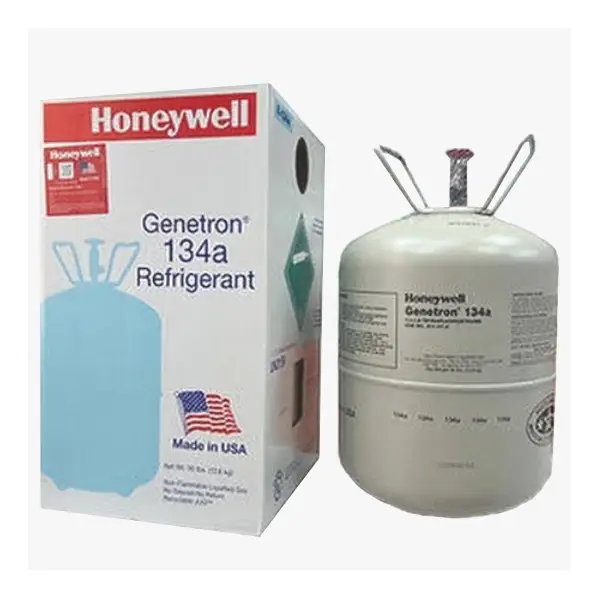
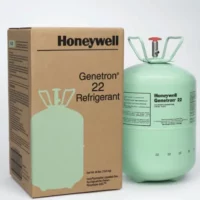




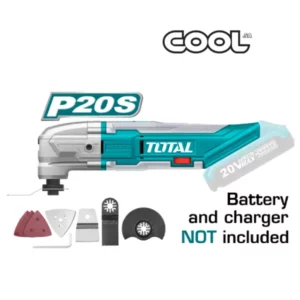
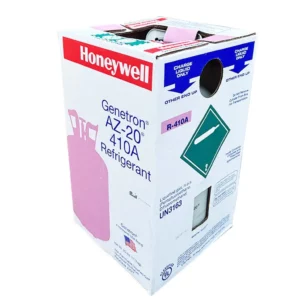
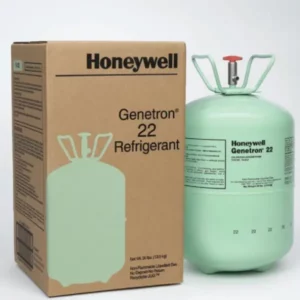
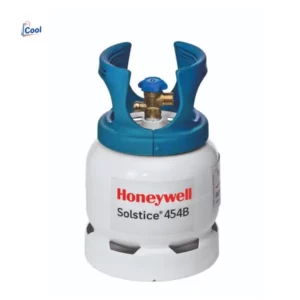

Farouk Sabir –
The Honeywell Genetron 134a from the USA is a reliable and efficient refrigerant, ideal for a wide range of cooling applications in both residential and commercial settings.
Qasim –
Cool …is best